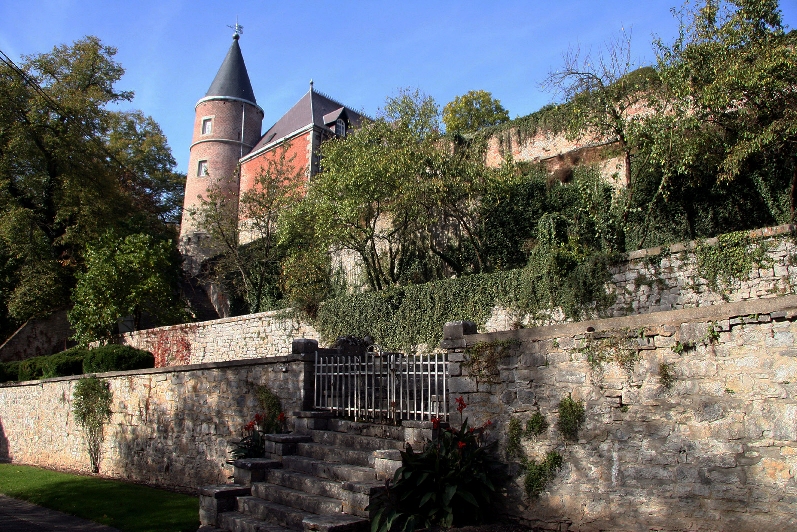




Park des Kastells Sankt Peter, Kalkofen und Kastells Sankt Marie
The Castel Saint-Pierre park
The park - nearby the bustling city centre and its many shops - is the perfect place for a romantic stroll with your significant other, a family day out, or even a festive barbecue with friends.
The park covers 27ha of woodland, many walking paths, ponds, as well as many traces of its eventful past.
The vegetation that grows in the Castel is typical of the Calestienne area, which has a soil that is rich in limestone. The park can pride itself on having a surprising variety of trees, which led to the creation of a signposted arboretum. You will encounter maple, ash and alder that thrive on the relatively rich and cool soil of the valley, box tree, dogwood, viburnum lantane, dog rose, species that grow on the dry soil of the Calestienne, but also a few giant sequoias (imported of course!) that dominate the plain below the Castel Sainte-Marie
You can also admire a Romanesque chapel in Roman style, dedicated to Saint-Petrus, who gave his name to the park. Chapel and park are both listed monuments.
Castel Sainte-Marie
The ruins of the once formidable castle of Beauraing loom out above the Park Castel Sainte-Marie. The castle dates from the 13th century and suffered heavy damages during successive battles and fires. It was nearly burnt to the ground in 1889 by a heavy fire.
At the time of the Dukes of Osuna, these two parks formed a whole. The Duke was the last lord of Beauraing and restored the castle using great financial means. Alas, after his death, the castle was sold and a couple of years later (on the 3rd June 1889) it was burnt to the ground in devastating fire.
Since then, the castle has changed hands quite a few times, the former horse stables were recently converted into guestrooms and a restaurant, and one of the towers (Charles Quint or Kaiser Charles) is now a holiday cottage.
Lime kiln
Right opposite one of the entrances to the Castel Saint- Pierre park, you can admire the old lime kiln, an impressive construction in limestone rubble probably dating back to the end of the 19th century. The lime kilns in Beauraing, located close to the quarry and still visible today, were probably at the origin of the development of the neighbourhood known as ' faubourg Saint Martin'. The kiln was closed down in 1958, before that it represented a major economic activity.
